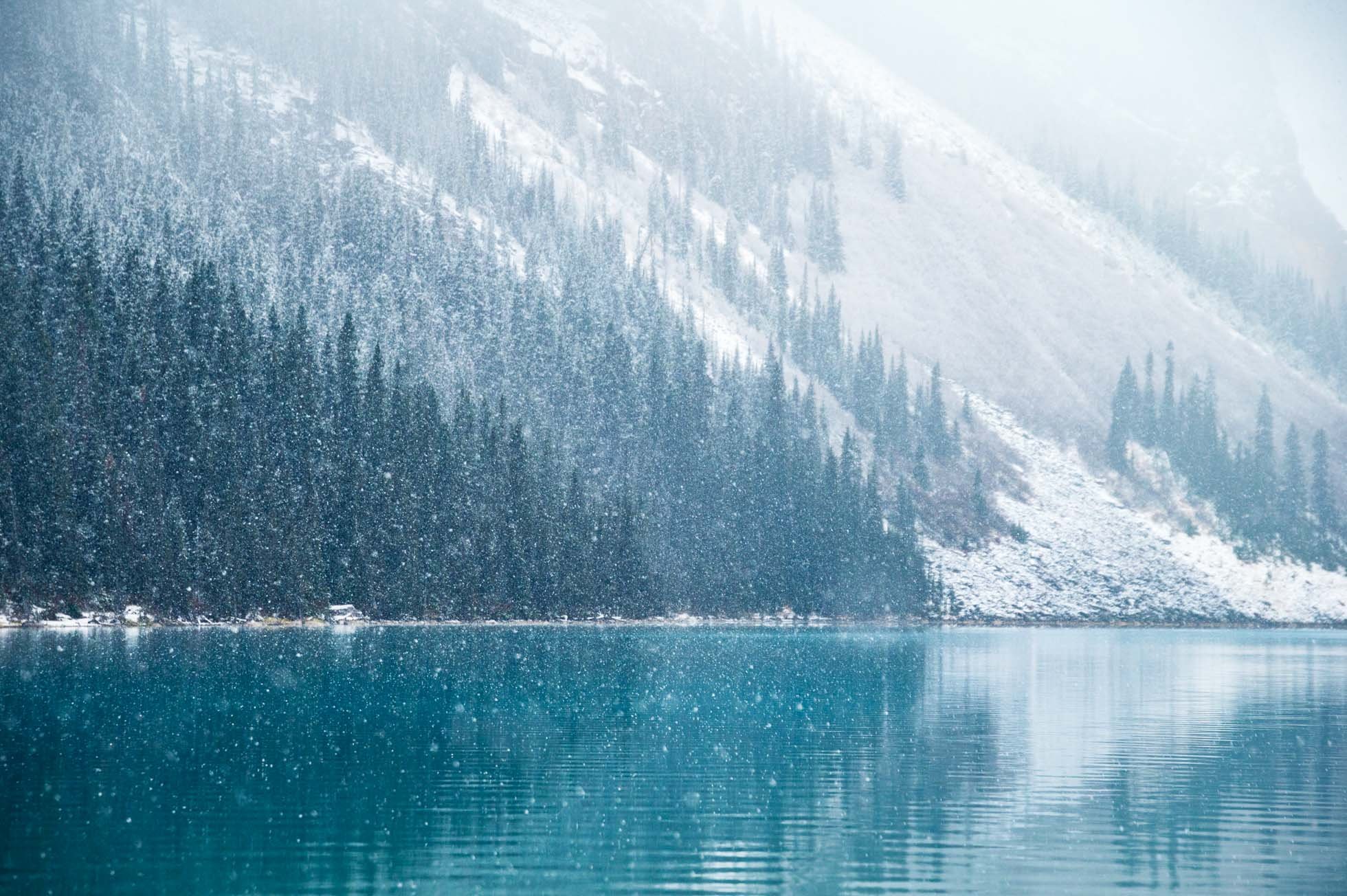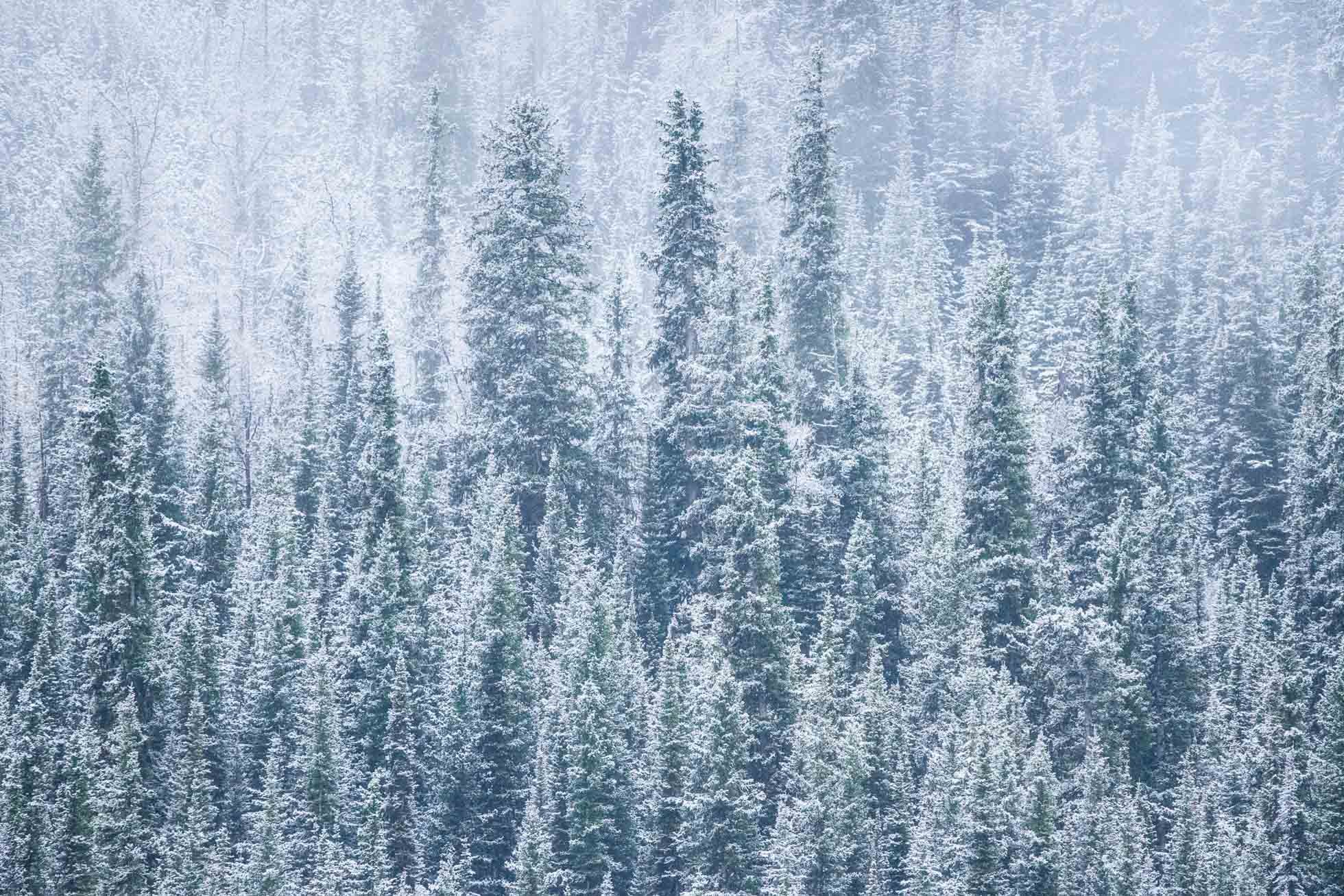Have you had your first snowfall yet this year? It seems the snowy weather is late for most areas this year. It is unseasonably warm here in Chicago right now, but after this warm snap, it looks like winter temps are on their way, and I can’t help wishing for snow and a white Christmas. There is something so magical about the first snowfall.
While Chicago is still awaiting the snow, I was lucky enough to experience a beautiful snowfall at Lake Louise this past October. In fact, I chose that location for the group that morning specifically because there was a strong chance of snow and there are few things more magical than freshly falling snow in the mountains.
Lake Louise captured with the Sigma 24-105mm at 105mm
Shutter speed 1/160 to capture the falling snowflakes
There are a few things to consider when photographing in falling snow, both technically and creatively, to come away with the magic of the snowfall!
1) Use a lens hood to help keep your lens free of falling snowflakes! As the snowflakes fall, they can land on your lens and melt, creating droplets that show up as spots in your images. Obviously this is not ideal. A lens hood can help to protect the front of your lens as you photograph.
2) Keep a microfiber cloth handy to dry your lens of the snowflakes that make their way onto your lens. Even with a lenshood, sometimes the direction of the falling snow and wind can still cause some flakes to land on your lens. Be sure to check your lens between exposures and use the cloth to clear it free of moisture.
3) Use a rain/snow cover over your camera to protect it from the moisture!
4) Avoid changing lenses as the snow falls to keep moisture out of the inside of your camera. If you have more than one camera body, put a wider angle lens on one camera and a telephoto lens on the second.
Snow in the trees captured with the Sigma 150-600mm Contemporary lens with a shutter speed of 1/800
5) Consider your shutter speed. Use a fast shutter speed to freeze the falling snow if you want to emphasize the snowflakes. A slower shutter speed will show the movement of the flakes with streaks that look more like falling rain.
6) Look for dark backgrounds to emphasize the snowflakes. The white snow will blend into the sky or other light area of the scene. Backgrounds like deep green trees or blue waters will allow the white snowflakes to stand out!
Snow falling on Lake Louise captured with the Sigma 24-105mm at 82mm . I shifted my perspective to the water and trees so that the snowflakes would show up against the darker backgrounds.
Hope you get out there to photograph when the snow arrives!
Kristen Ryan is an award winning and published landscape photographer and educator residing in the Midwest suburbs of Chicago. All images are available for purchase in the Fine Art Store or by request. Kristen leads ladies landscape photography retreats in the Tetons, Glacier NP, Hilton Head, Chicago, and the Canadian Rockies, offers private mentoring . New online educational materials are coming soon!




















